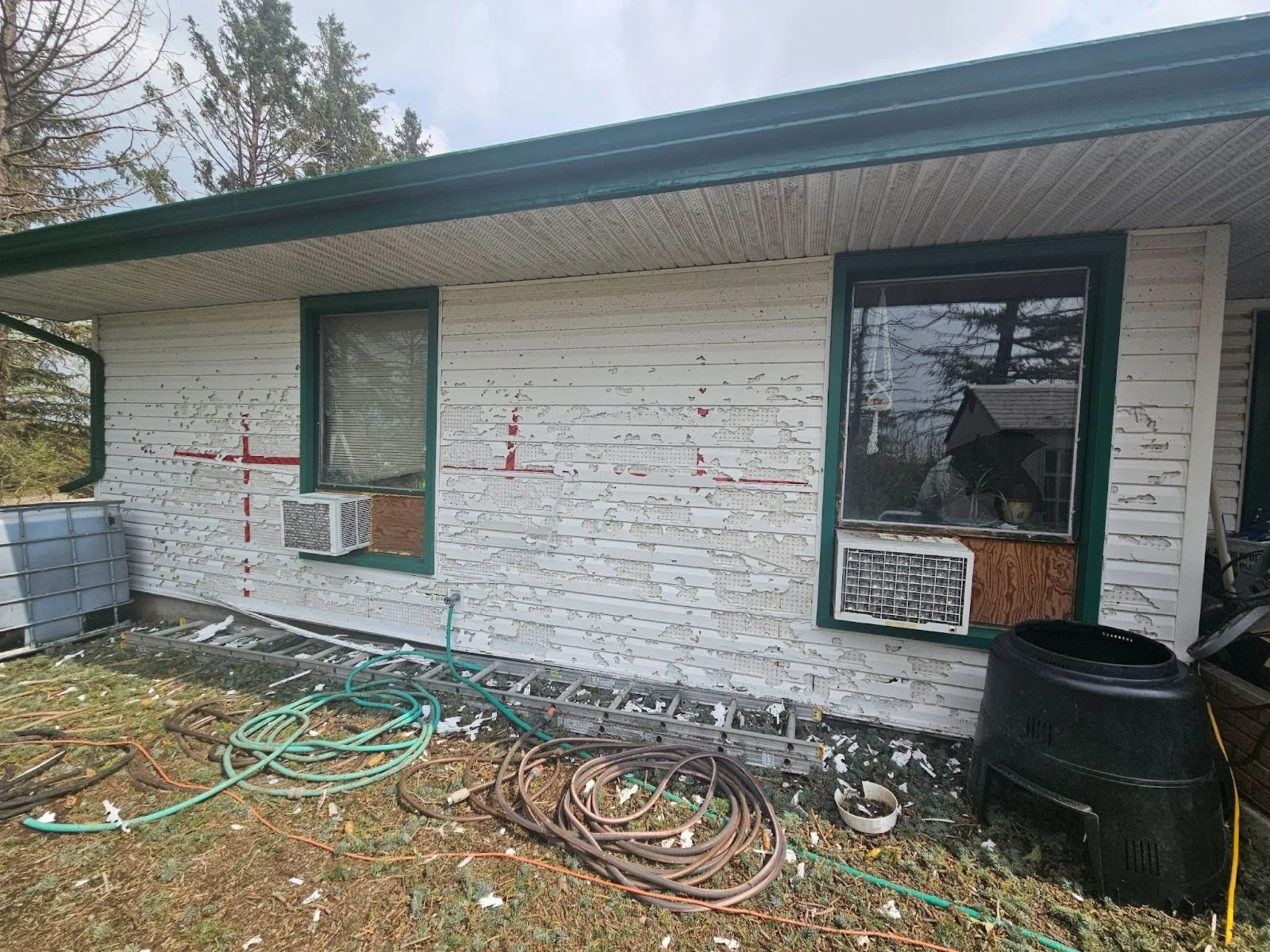
Survey suggests 35,000 buildings damaged by Calgary hailstorm
The scope of the damage may resemble losses incurred during the infamous 2020 hail event that hit the city
A preliminary study of the August 5 hailstorm that hit northern Calgary indicates damage similar to the city’s infamous 2020 hail event.
“Findings indicate that the scope of damage for this event is like that from the 2020 storm,” reads an early report from Western University’s Northern Hail Project (NHP).
“NHP has learned the hailswath was more than 120 km long and 12 km wide. Strong winds also seemed to play a role in increasing damage.”
DON’T MISS: Massive hail strikes southern Alberta Monday, causes major damage
That 2020 hail event, according to the Insurance Bureau of Canada (IBC), dealt approximately $1.3 billion in insured damages and was the costliest hail-related disaster in Canadian history.

While much of NHP’s research equipment, including hail pads and this mobile radar, were pummeled in the storm, researchers say they’ll yield valuable data about the size and velocity of the stones that the storm produced. (Connor O’Donovan)
That early estimate comes as NHP conducts what it calls “Canada’s first ever in-depth investigation of a major urban hail event.”
NHP researchers have been stationed in Alberta all summer studying hail storms and their impacts, gathering data on how the storms form, how they behave and the damage they cause.
Goals of the research project, which launched in 2022 as a spinoff of the Northern Tornadoes Project, include building a better understanding of hail climatology in Canada, improving forecasting lead times, building radar that more accurately differentiates between hail stone sizes, and informing efforts to reduce the risk and damage caused by hail.
Fifteen investigators are conducting forensic-level damage surveys in Calgary, going door-to-door in impacted areas documenting the extent of damages and how different building materials performed against the hail. NHP field teams also followed and gathered data about the storm itself Monday.
Field Coordinator Jack Hamilton says NHP’s early estimate suggests “at least 35,000 homes” in north Calgary and the immediate area were damaged to some degree by the storm.
DON'T MISS: Peas, walnuts and golf balls: here’s what hailstone size means for damage

NHP data paints a picture of the regions of Calgary impacted by the storm, along with the severity of damage. Darker icons indicate more significant damage. (Connor O’Donovan)
“It’s a daunting task. We’re going to survey as many as we can,” said Hamilton.
“It’s certainly going to be comparable to 2020. It’s too early to say to what extent. The interesting thing about this storm is that the airport took the brunt of the storm as well and that could increase the loss as well.”
Video from August 5 shows ceiling tiles falling to the floor as water cascaded down through the roof of the Calgary International Airport’s domestic terminal building.
Flights were rescheduled as some of the airport’s B and C gates were evacuated as a result of the storm.
According to an update from the Calgary Airport Authority, the airport’s B gates remained closed as late as Tuesday as cleanup efforts continued.
WestJet, meanwhile, announced that 16 of its aircraft have been grounded due to hail damage, representing approximately ten per cent of its total fleet capacity. The planes will “require substantial repairs and inspections” before returning to the skies, according to the Calgary-based airline.
“The severity and direction of the actual thunderstorm and hail became clear less than 30 minutes before impact,” WestJet President Diederik Pen said of the incident.
MUST SEE: How supercells grow to produce giant hail and intense tornadoes

Damage is seen at a home in Calgary’s Sage Hill neighbourhood. (Connor O’Donovan)
A spokesperson for the IBC says an estimate on the total value of insured losses from this storm should be released in 30 to 45 days.
She agrees that while it’s too early to properly compare this storm to the one that hit in 2020, which resulted in about 70,000 insurance claims, it’s going to be a costly cleanup for everyone affected.
“In 2024 all claims costs are up. Even a simple repair to a vehicle is much more expensive today than it was in 2020,” said IBC Consumer & Industry Relations Director Anne Marie Thomas.
RELATED: Hail damage? Here's how insurance can — or can't — help
As for how this storm might impact insurance rates, Thomas says it’s also too early to tell, but points out that this hailstorm follows closely behind the wildfires in Jasper and significant flooding in Ontario.
“No one event causes a rate increase. It’s the total claims cost year-over-year that impacts rates, and insurance is spread out over the country. The premiums are taken in from all over the country,” she said.
“But I think Canada is on track to have a very expensive year for catastrophic claims this year. It’s time to look at how we build, where we build and what the materials are that we use to build because it’s clear these types of events aren’t going away. They’re just becoming more frequent and more severe. We have to look at building back better.”
Thomas suggests anyone filing a claim take as many photos and videos as possible of their damage, and to dig up any receipts for damaged items as well.











